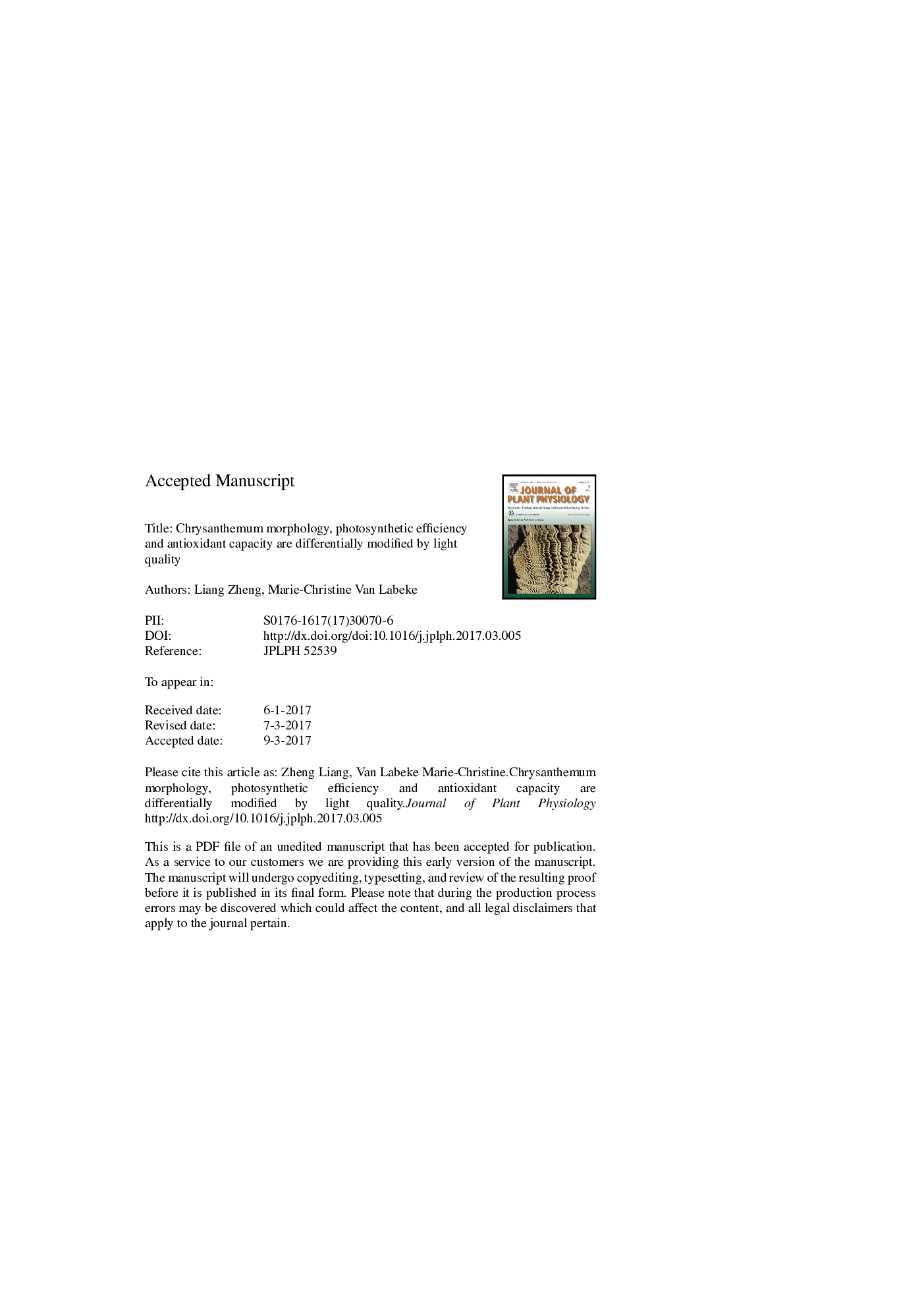| Article ID | Journal | Published Year | Pages | File Type |
|---|---|---|---|---|
| 5518112 | Journal of Plant Physiology | 2017 | 28 Pages |
Abstract
The effect of light quality on leaf morphology, photosynthetic efficiency and antioxidant capacity of leaves that fully developed under a specific spectrum was investigated in Chrysanthemum cv. Four light treatments were applied at 100 μmol mâ2 sâ1 and a photoperiod of 14 h using light-emitting diodes, which were 100% red (R), 100% blue (B), 75% red with 25% blue (RB) and white (W), respectively. Intraspecific variation was investigated by studying the response of eight cultivars. Overall, red light significantly decreased the leaf area while the thinnest leaves were observed for W. Chlorophyll content and Chl a/b ratio was highest for W and lowest under R. B and RB resulted in the highest maximum quantum yield (Fv/Fm) and quantum efficiency (ΦPSII). A negative correlation between heat dissipation (NPQ) and ΦPSII was found. Blue light induced the highest hydrogen peroxide content, which is a proxy for total ROS generation, followed by W and RB while low contents were found under R. The antioxidative response was not always correlated with hydrogen content and differed depending on the light quality treatment. Blue light enhanced the proline levels, while carotenoids, total flavonoid and phenolic compounds were higher under W. Intraspecific variation in the responses were observed for most parameters with exception of leaf thickness; this intraspecific variation was most pronounced for total phenolic and flavonoid compounds.
Keywords
Related Topics
Life Sciences
Agricultural and Biological Sciences
Agronomy and Crop Science
Authors
Liang Zheng, Marie-Christine Van Labeke,
